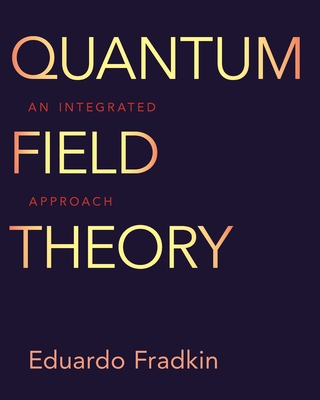“这本出色的教科书将数学逻辑与物理直觉相结合,易于阅读。弗拉德金对凝聚态物理和基本粒子物理都有深入的了解,他将量子场论作为一种功能多、方面广的工具来探索广泛的物理现象。”—纳坦•安德烈,罗格斯大学
“这是一本非常现代的量子场论著作,结合了凝聚态物理和高能粒子物理的应用。弗拉德金的方法既阐明了概念问题,例如重正化过程,又介绍了许多与实验的联系。”—胡安•马尔达西纳,普林斯顿高等研究院
“在过去的二十年中,通过与其他学科的相互影响,一些主题已成为量子凝聚态物理研究的前沿,例如:拓扑物质及其出现的准粒子、量子信息理论和量子计算。
图多尔•D•斯塔内斯库 的这本新书为这一研究领域提供了急需的全面介绍。这本书写得很清楚,带领读者从量子力学中的相关概念到冷原子系统和异质结构的物理实现,经历了科学概念和多个例子。 从凝聚态物理学的角度来看,它将是一个有价值的参考书,并将成为这一重要学科领域研究生水平的教科书。”
―Gabriel Kotliar,罗格斯大学
作者对事物进行了深入分析,从装配线到洗衣机,从城市电价暴跌到电动孵化器在养鸡场中的实用性……奈伊先生的成功不仅因为他精通技术,还因为他了解America文化的复杂性……[他] 知识渊博,善于发现爱德华•霍普 (Edward Hopper) 的《夜鹰》等画作中的重要意义……并将这些观察融入到他的论点中,即电力不仅改变了America人的生活,也改变了America人的自我。—约翰•R•斯蒂尔戈 (John R. Stilgoe),《纽约时报书评》
这本牛津迷你词典宣传有超过 90,000 个定义,它足够迷你,可以放进大多数口袋,但就其尺寸而言,它很厚。纸质封面很不寻常;它比软封面更硬,但比真正的精装更灵活。定义尽可能简短和简单,以减轻尺寸和重量。一些单词显示发音,或有单词用法或拼写提示。——一位读者
我不记得上次真正感觉到新的神经元在我的大脑中生长是什么时候了。这本书对 NFT、区块链和 Web 3.0 的新世界进行了精彩而令人兴奋的审视。这本书是正确的起点。它很有启发性。——一位读者
“虚拟、沉浸式世界正在迅速崛起。旧模型在这些新现实中不再适用。对于渴望leading未来的营销人员来说,营销 6.0 是迄今为止Z好的指南。”——ROB WOLCOTT,TWIN Global 联合创始人兼董事长
“沉浸式营销旨在将客户带入一个故事中,直到她确信自己身临其境。在这个过程中,真实和虚幻的刺激混合在一起,形成一种新的感知现实。本书引导我们进入这个未来的营销世界。真正具有启发性和发人深省。”——赫尔曼•西蒙 (HERMANN SIMON),西蒙顾和创始人兼董事长
“普拉多的书清楚地说明了这个世界的发展速度有多快,以及如果您想脱颖而出并提供好的解决方案和beyond曲线的执行算法,您需要深入研究......普拉多的书显然处于机器学习世界的前沿。”——Ireland科技新闻
“金融系统固有的复杂性证明了复杂数学技术的应用是合理的。《金融机器学习的进展》是一本令人兴奋的书,它以清晰的术语阐明了一个复杂的主题。我衷心向任何对量化投资的未来感兴趣的人推荐这本书。”——教授, John C. Hull,多伦多大学,《期权、期货和其他衍生品》一书的作者











